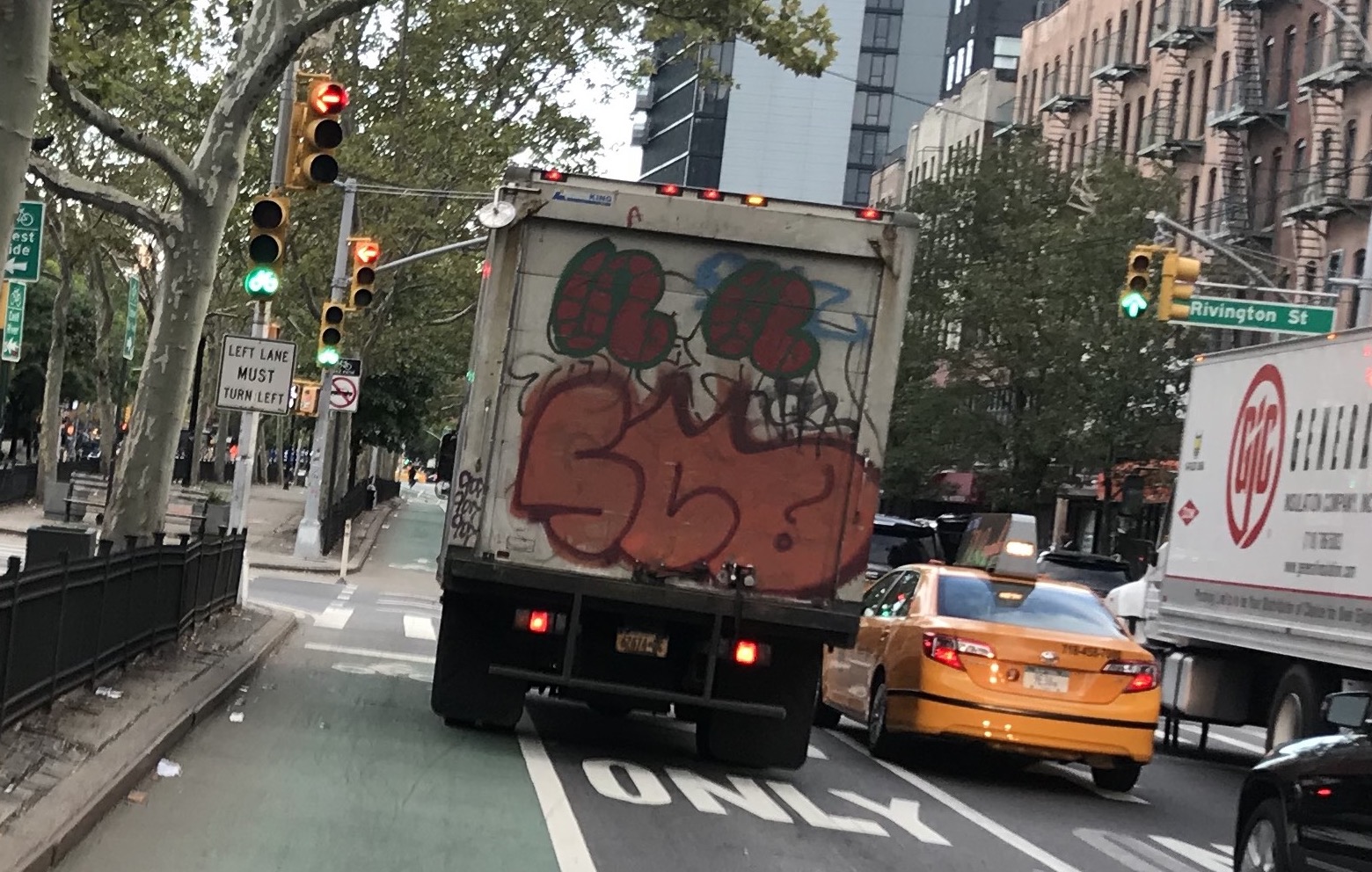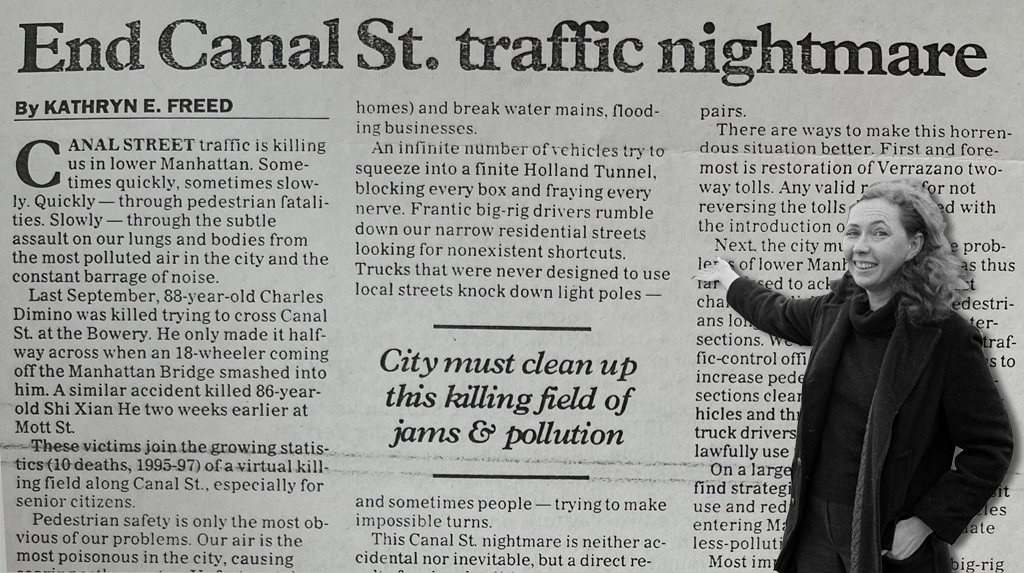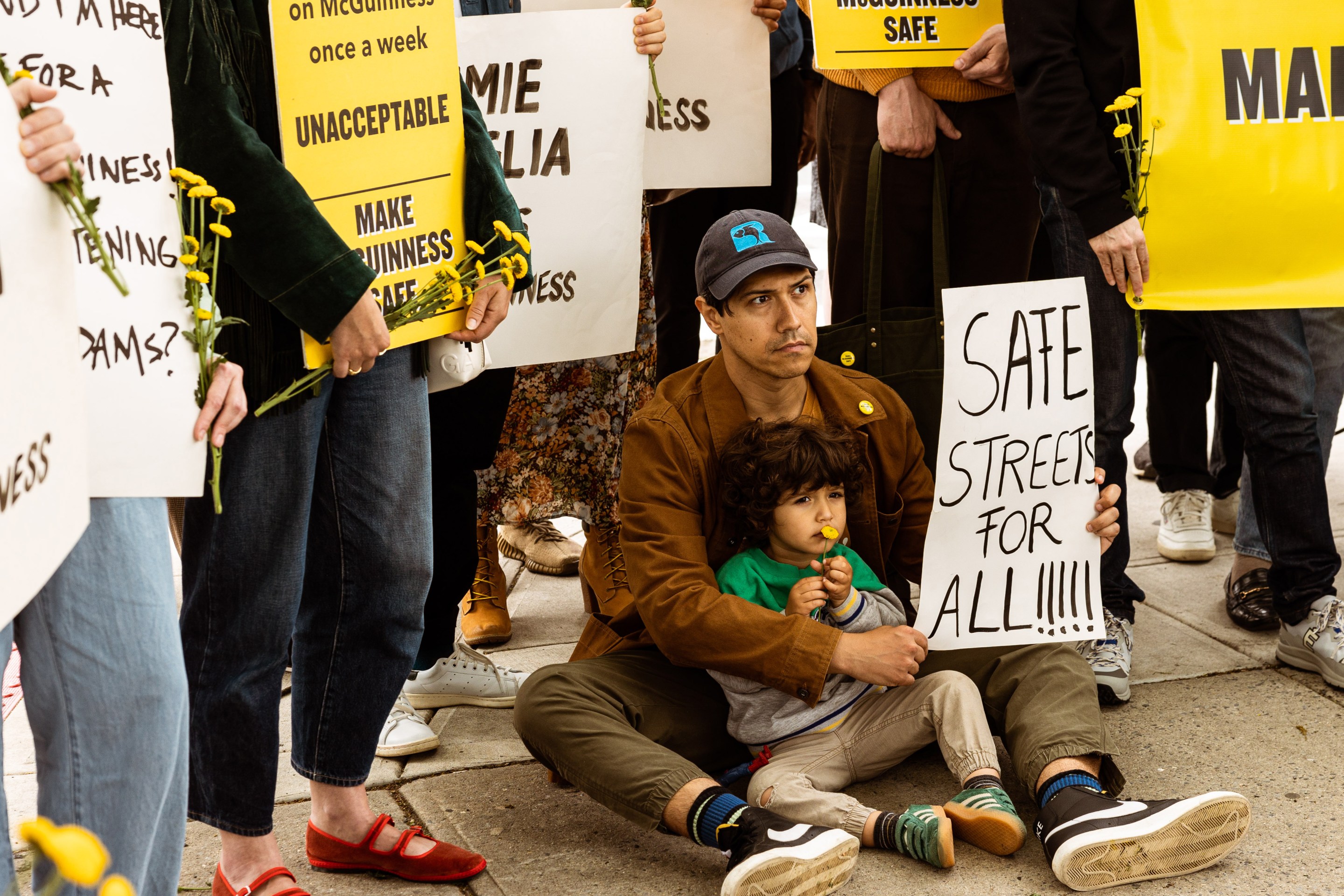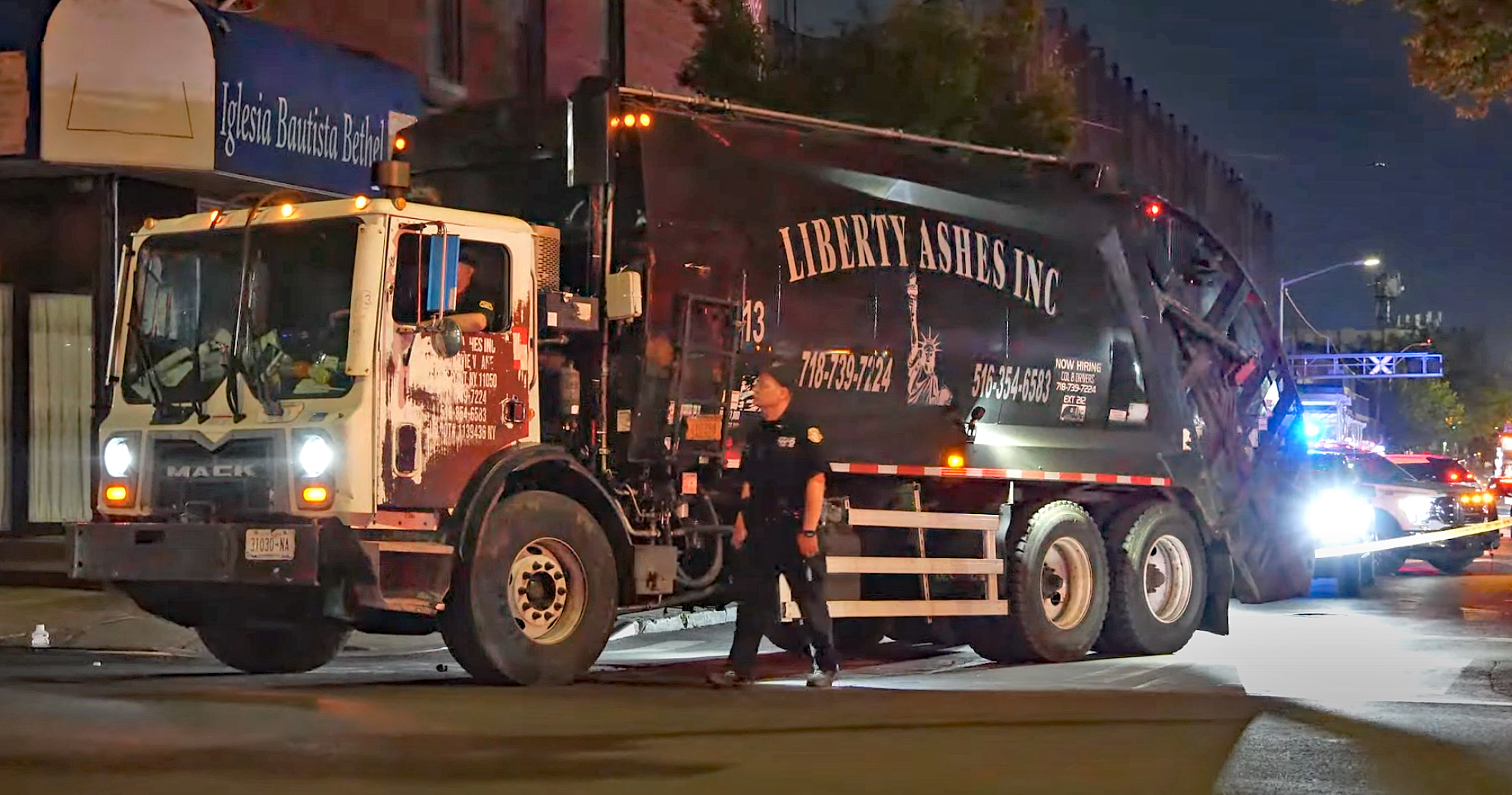A pair of bike advocate-engineers think they have solved a lingering issue dogging DOT at intersections along protected bike lanes: how to maximize safety for pedestrians, cyclists and drivers without slowing them down with red light timing designed for cars.
The designers — Christine Berthet and Joe Realmuto — say the optimum signal timing on main arterials should be a 100-second light cycle, of which 70 seconds are green [PDF].
Berthet and Realmuto were motivated by DOT's "Cycling at the Crossroads" report, released earlier this year, which concluded that separate green light phases for cyclists and left-turning motorists — known as "fully split phases" — were the best way to ensure safety for all road users, yet still had too many drawbacks to be widely implemented. (A similar intersection design, known as the "delayed turn" or split leading bicycle interval, builds on that model by giving cyclists their own phase as a head-start, then allowing drivers to proceed with a flashing yellow arrow.)
Enter Berthet, Manhattan Community Board 4 transportation committee chair, and Realmuto, an engineer and cyclist from Queens. The pair set out to find the optimal traffic signal timing to give motorists, cyclists, and pedestrians the highest possible number of green lights in a row.
Since the city's existing signal timing schemes are based on typical driving speeds, Berthet and Realmuto pegged their simulation to 25 mph speed limit, assuming each block is 264-feet long and takes 7.2 seconds to travel by car. Assuming slower speeds for pedestrians and cyclists, Berthet and Realmuto then simulated variety of possible signal timing schemes, all of which gave drivers 45 straight green lights, to determine which would produce optimal "green waves" for cyclists and pedestrians as well.
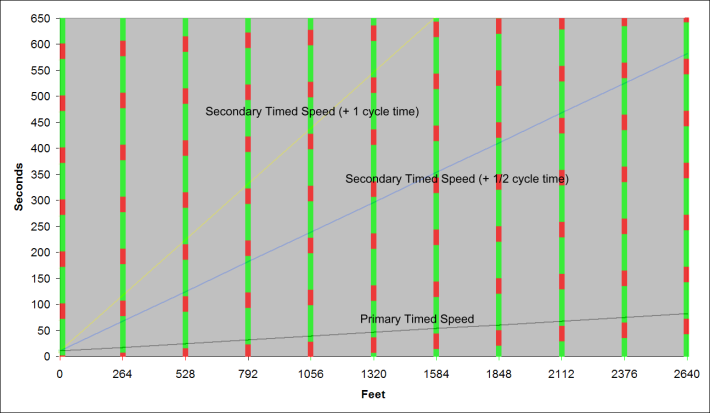
Based on the simulation, 70 seconds of green time and 30 seconds of red would yield a 45-block green wave for drivers, a 19-block green wave for cyclists, and 13-block green wave for pedestrians. That arrangement works best on Manhattan's avenues, whose crosstown street carry less traffic and therefore necessitate shorter light cycles.
Berthet, a longtime safe streets advocate in the Chelsea and Hell's Kitchen neighborhoods, has been pushing for more split-phase signals for years. DOT has demurred, citing its desire not to stop cyclists at too many green lights. But its intersection report foretold plans to "develop strategies to improve signal coordination that reduces bicyclist stopping and delay along corridors with several fully split phase intersections."
Berther and Realmuto hope their simulation can serve as a model for DOT to replicate.
"It’s kind of a holy grail, in a sense," Berthet said. "There is a sweet spot. You don’t have to compromise too much if you do it the right way. There’s no reason not to give the proper safety."
